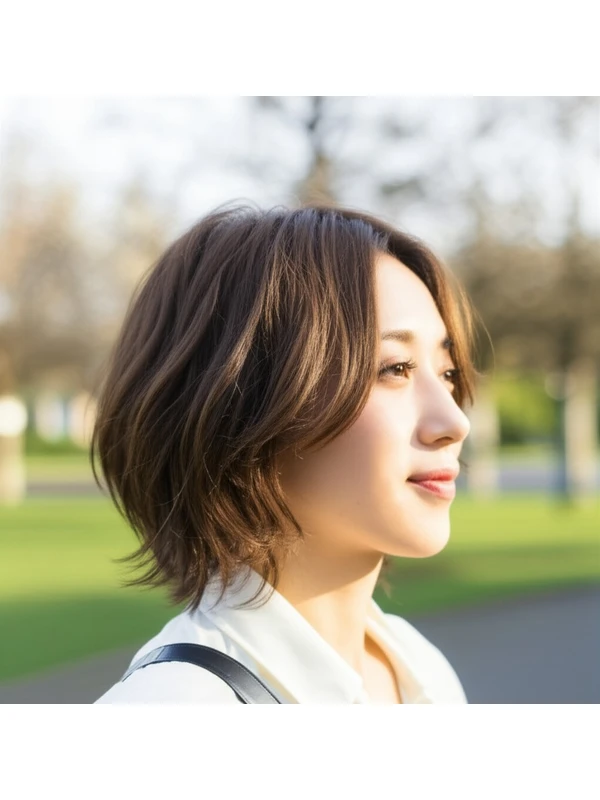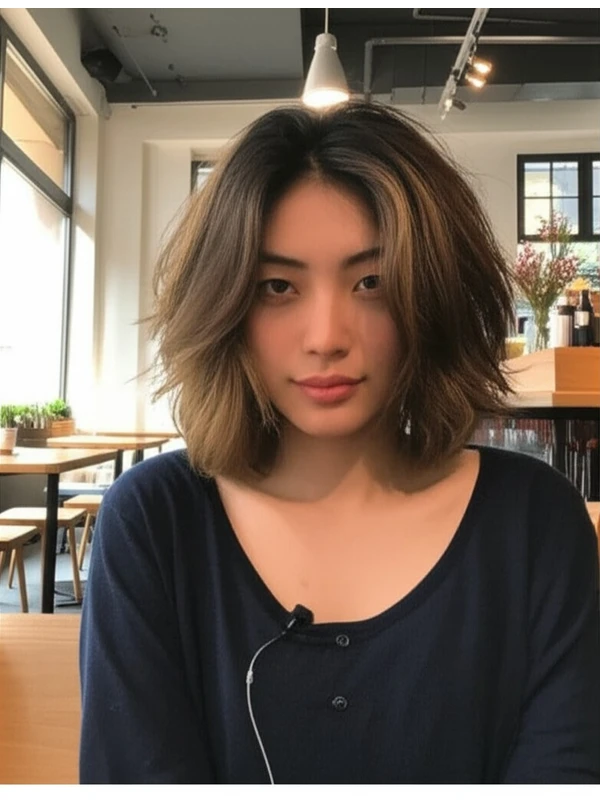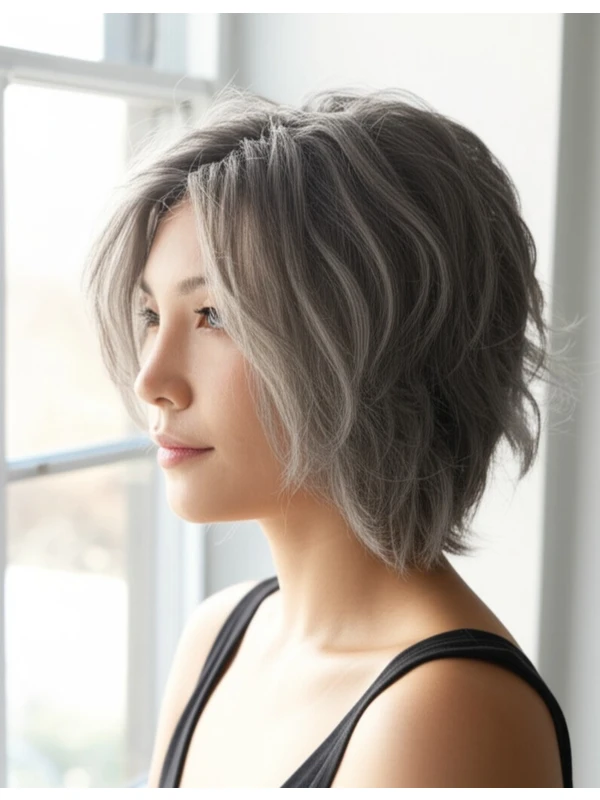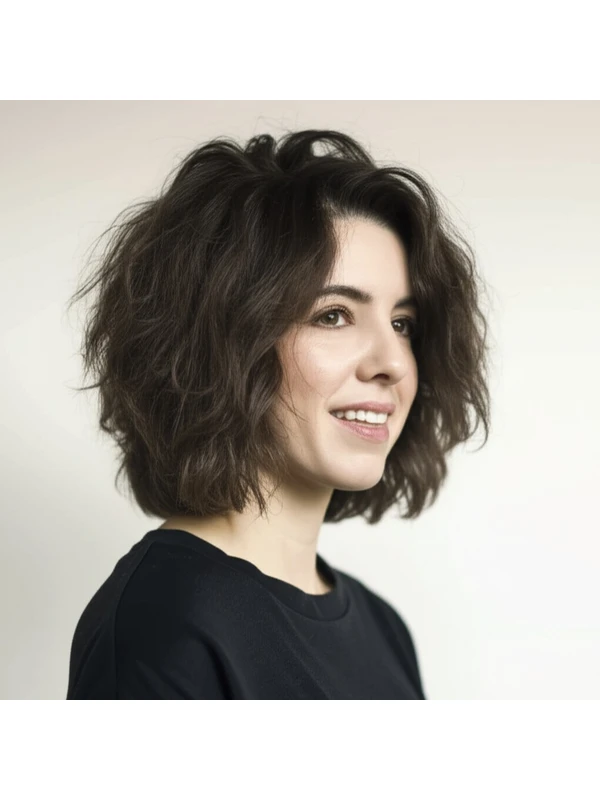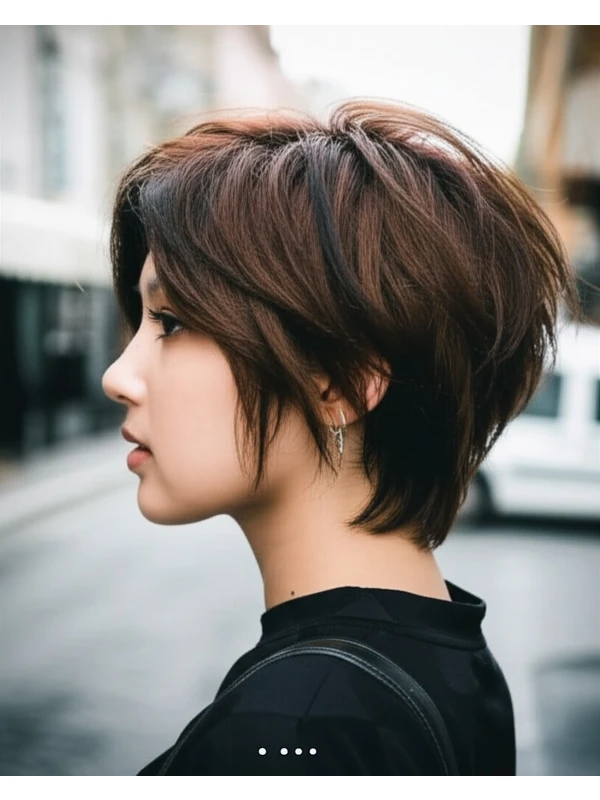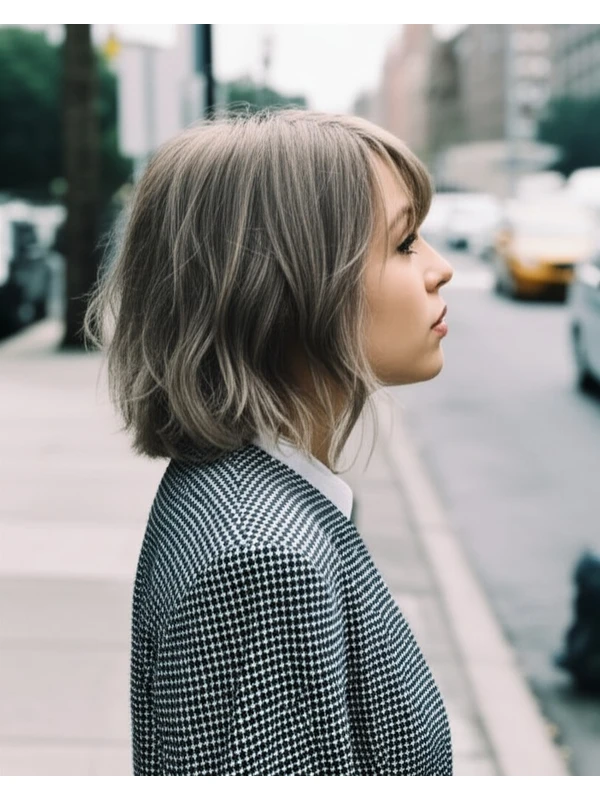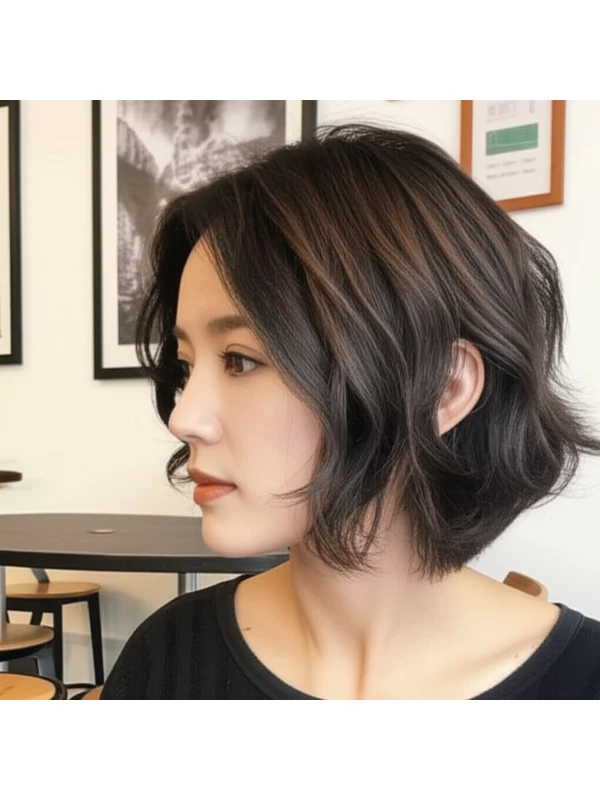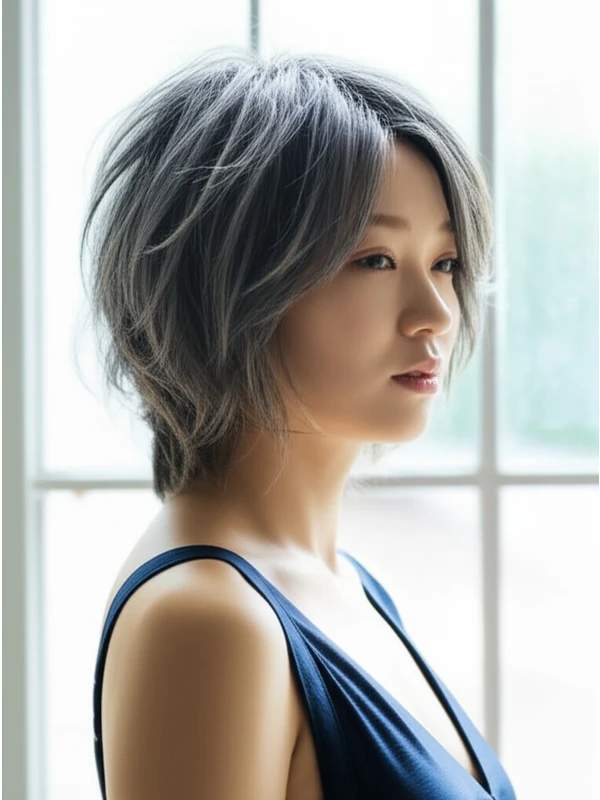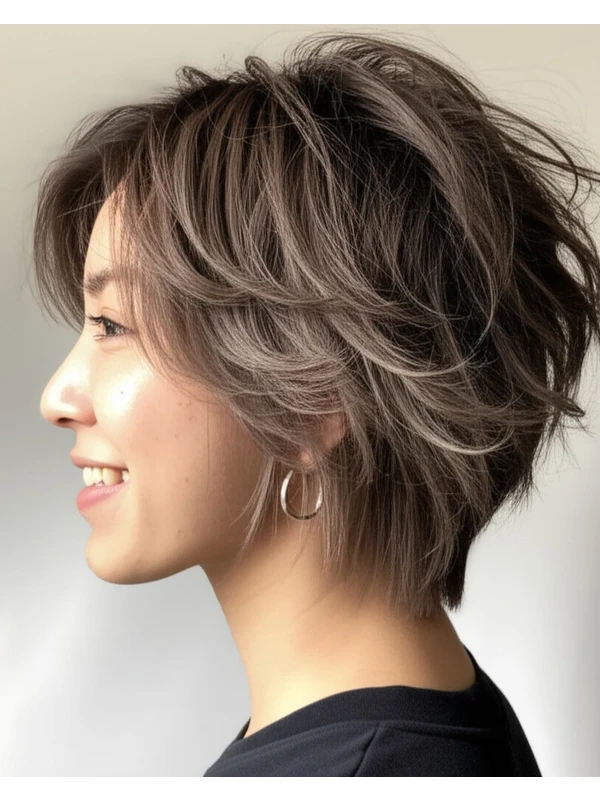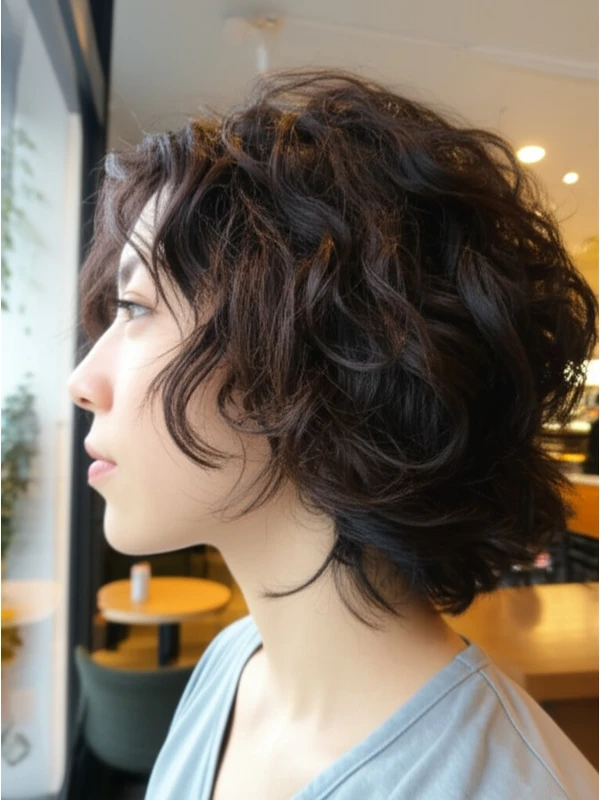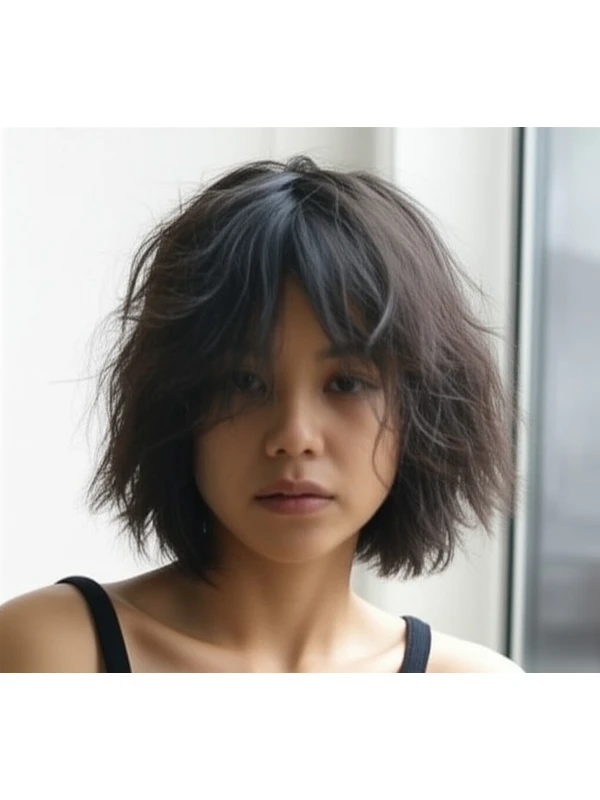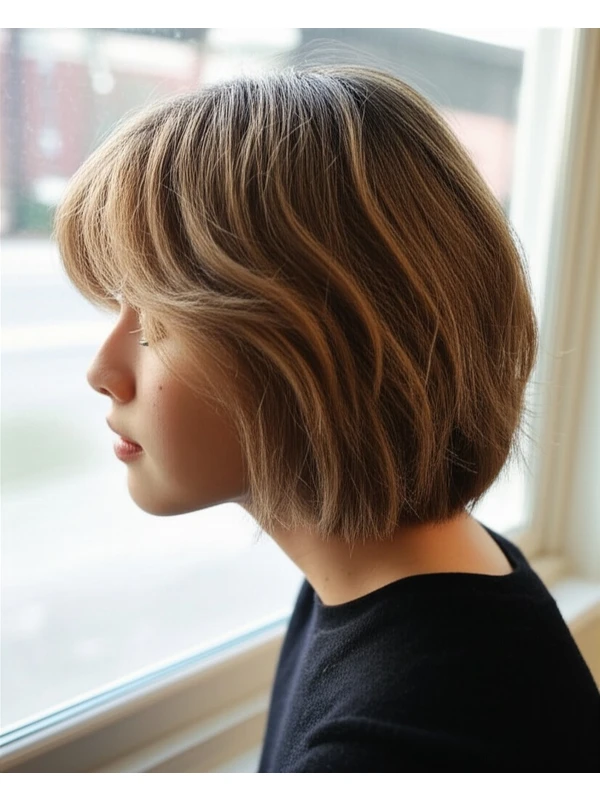#The Soft Wolf Cut: A Guide to Effortless Cool
The wolf cut is having a moment – and for good reason! It’s a trendy, playful style that combines elements of the shag and mullet, offering volume, texture, and a whole lot of personality. But it's not just about looking edgy; when done right, this cut can flatter almost any face shape or hair type. Let’s break down everything you need to know about embracing the soft wolf cut.
#1) Background & Definition: What Exactly Is a Wolf Cut?
The "soft wolf cut" is essentially a layered haircut with significant volume at the crown and shorter, face-framing pieces. Think of it as a more approachable, less severe version of the traditional mullet – ditching the harshness for something softer and more modern.
Key Features:
- Heavy Layers: The defining characteristic—lots of layers to create movement and volume.
- Face-Framing Pieces: Shorter pieces around the face that soften the look and highlight features.
- Volume at the Crown: Lifted roots and a fuller top section are essential for the "wolf" feel.
- Disconnected Appearance: While blended, there's a deliberate separation between the shorter layers and longer lengths.
Typical Length Ranges: It can work anywhere from collarbone length to shoulder-length or even slightly longer (past the shoulders). The key isn’t how long, but how the layers are distributed.
Alternative Names: You might also hear it called a "wolf shag," “modern shullet,” or simply, an "elevated shag."
#2) Face Shape Fit: Finding Your Ideal Wolf Cut
The beauty of the soft wolf cut is its adaptability. However, understanding how it interacts with your face shape can help you achieve the most flattering result.
- Oval: This is a universally flattering shape! The layers add interest and volume without disrupting balance. A full fringe or curtain bangs work beautifully.
- Round: The layered pieces around the face will slim and lengthen, creating definition. Avoid too much volume at the sides; focus on height at the crown. A side-swept fringe is a great option to break up roundness.
- Square: The softness of the layers softens angular features. Curtain bangs or longer, wispy pieces that blend into the cheekbones are ideal.
- Heart: The volume at the crown helps balance a wider forehead and pointed chin. A shorter, textured fringe can further soften the face.
- Diamond: The layered style adds softness to strong angles. Side-swept bangs or curtain bangs will create a more balanced look.
- Oblong (Long): Shorter layers around the face and a fuller fringe help visually shorten the face, creating width. Avoid excessive length at the ends which can elongate further.
#3) Body Proportions & Height Guidance: Considering Your Silhouette
Beyond your face shape, consider how the wolf cut will impact your overall proportions.
- Petite: Shorter lengths (collarbone to shoulder) work best to avoid overwhelming a smaller frame. Too much volume can make you appear shorter.
- Average: Most variations of the wolf cut suit average heights well. Experiment with different fringe lengths and layering patterns.
- Tall: Longer versions (past the shoulders) add visual weight and balance height, but ensure layers don't look stringy.
- Narrow Shoulders: Volume at the crown creates a broader shoulder line visually.
- Broad Shoulders: Avoid excessive volume on top that can accentuate width further; focus more on face-framing layers.
- Short Neck: A shorter fringe or no fringe is often best to avoid emphasizing a short neck.
- Long Neck: Longer, layered pieces help fill out the space and create a more balanced look.
#4) Works Best With Hair Types & Densities: Tailoring the Cut
The soft wolf cut can be adapted for various hair types, but adjustments are necessary!
- Straight Hair: Layers will fall precisely as intended, showcasing the shape beautifully. Use texturizing products to enhance separation and movement.
- Wavy Hair: The layers amplify natural wave patterns. Embrace the texture with curl-enhancing products.
- Curly/Coily Hair: This cut can work, but communication with your stylist is key! Layers need to be strategically placed to avoid a triangular shape or awkward bulkiness.
- Shrinkage Consideration: Remember that curls and coils shrink as they dry. Account for this when determining length. What looks like shoulder-length in the salon might end up shorter once fully dried.
- Fine Hair: The layers create the illusion of thickness, but avoid too many short layers which can make hair look sparse.
- Medium/Thick Hair: The cut shines with medium to thick density – the layering provides much-needed shape and movement.
- Density Tips: If you have very dense hair, thinning shears might be used during cutting to remove some weight and create more flow.
#5) Styling Variations: From Casual Cool to Evening Chic
The beauty of this cut lies in its versatility!
- Sleek vs Textured: Use a smoothing serum for a polished look or texturizing spray for a more undone, lived-in feel.
- Middle vs Side Part: A middle part emphasizes symmetry and balance; a side part adds softness and asymmetry.
- Fringe Variations: Full fringe, curtain bangs, wispy bangs – the choice is yours! Consider your face shape when selecting a style.
- Occasion Styling:
- Casual: Air-dry with a texturizing product for effortless cool.
- Office: Sleek and polished with a round brush to smooth layers, or subtle waves.
- Evening: Add volume at the roots using mousse and create defined curls or waves with a curling iron.
#6) Maintenance: Keeping Your Wolf Cut Looking Fresh
- Trim Cadence: Every 6-8 weeks is typical to maintain shape and remove split ends.
- At-Home Routine: Focus on hydrating products, especially if you have dry hair.
- Heat vs Air-Dry: Air drying enhances texture; heat styling allows for more control but can cause damage over time. Use a heat protectant!
- Product Checklist:
- Shampoo & Conditioner (suited to your hair type)
- Leave-in Conditioner or Detangler
- Root Lifter/Mousse (for volume)
- Texturizing Spray or Sea Salt Spray
- Finishing Serum or Oil (to tame frizz and add shine)
- Estimated Daily Styling Time: 10-30 minutes, depending on desired style and hair type.
#7) Grow-Out Roadmap: Evolution Over Time
- Months 1-3: The shape is most defined. Regular trims are crucial to maintain the layers.
- Months 4-6: Layers start to blend more naturally as length grows. Adjustments may be needed at your trim appointments.
- Maintaining Shape: Ask your stylist about techniques like point cutting or texturizing between cuts to keep the style looking intentional and avoid a blunt, overgrown look.
#8) Color Pairings: Enhancing Your Wolf Cut
The wolf cut’s layers are perfect for showcasing dimension!
- Cool Undertones (Ash Blondes, Cool Browns): Enhance the edgy vibe.
- Warm Undertones (Golden Blondes, Copper Reds): Add warmth and vibrancy.
- Low-Commitment Options: Balayage or babylights can add dimension without a drastic color change. Face-framing highlights are particularly flattering with this cut.
#9) Season & Occasion Guide: Styling for Every Moment
- Spring/Summer: Embrace lighter, airier styling – let your natural texture shine through!
- Fall/Winter: Add warmth and richness with deeper tones and more defined layers.
- Work: Sleek and polished styles are best.
- Weddings/Parties: Experiment with curls, waves, or a dramatic side part.
- Formal Events: A sleek blow-out with volume at the crown will elevate this cut for special occasions.
#10) Cost & Time: Salon Investment
- Salon Time: Expect to spend between 1.5 – 3 hours in the salon, depending on hair length and complexity of layering.
- Price Range: The cost is generally moderate—expect a range that’s slightly higher than a standard haircut but less expensive than more complex styles.
#11) Pros & Cons: Weighing Your Options
Pros:
- Versatile – can be styled in many ways.
- Flattering for various face shapes and hair types (with adjustments).
- Adds volume and movement.
- Trendy and stylish.
Cons:
- Requires regular trims to maintain shape.
- Can look messy if not styled properly.
- May require more product than simpler styles.
#12) Salon Consultation Script: Questions to Ask Your Stylist
Here are some prompts for a productive consultation:
- "I'm interested in the soft wolf cut – can you show me examples of it on different hair types?"
- “Considering my face shape [mention your face shape], how would you adapt the cut?”
- "What fringe options would work best for me, and what level of maintenance is involved?"
- "How will this style look as it grows out? What adjustments should we make at future appointments?"
- “Can you demonstrate a few simple styling techniques I can do at home?”
FAQs: Your Burning Wolf Cut Questions Answered
- Is the soft wolf cut difficult to style? It depends on your hair type and desired look! With practice, most people find it manageable.
- Can I get a soft wolf cut with very short hair? While possible, shorter lengths require more precise layering and may not achieve the full "wolf" effect.
- Will this style make my hair look thinner? Not necessarily! The layers create volume and movement that can disguise thinning areas.
- Can I do this at home? It’s best left to a professional, especially for the initial cut. However, you can maintain it with trims in between salon visits.
- How long does it take to grow out? The grow-out process depends on your hair growth rate and desired length changes.
- What if I don't like bangs? You absolutely do not need bangs! A softened face-framing effect can be achieved without a full or even side-swept fringe.
